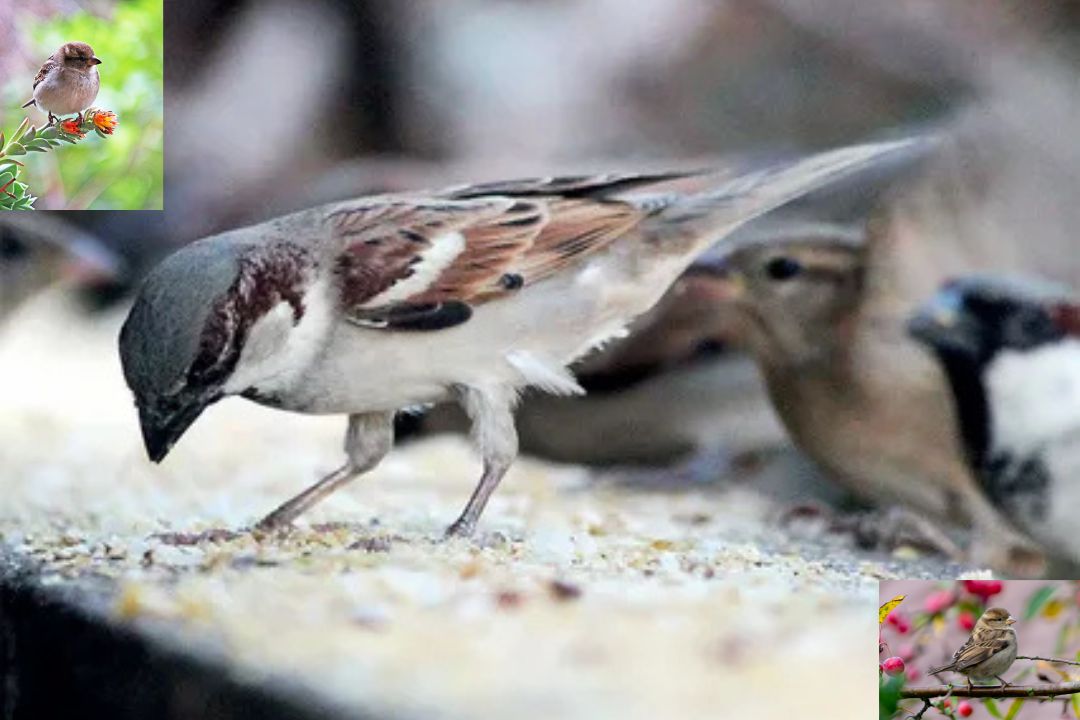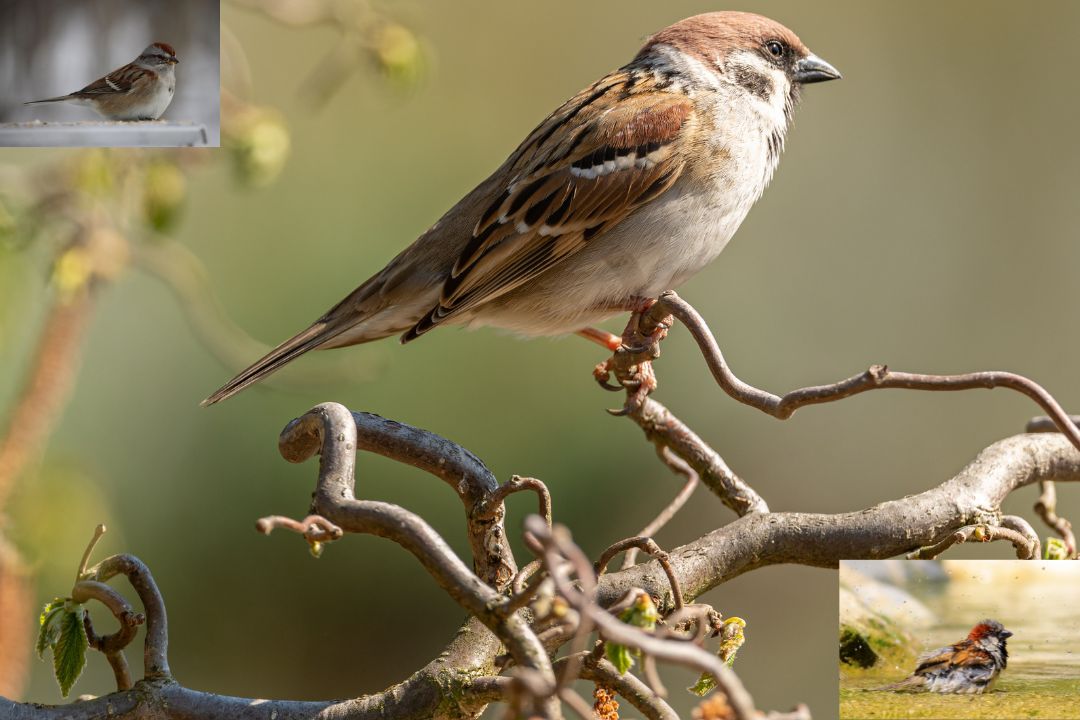The Cope sparrow : A Study of Resilience and Adaptation
The Adapt sparrow, an entrancing individual from the avian family, is known for its flexibility and strength in different conditions. cope sparrow Essentially found in North America, this little bird flourishes in a scope of living spaces, from metropolitan regions to open fields and backwoods.
Actual Qualities
Adapt sparrows are described by their unmistakable plumage, which commonly incorporates a blend of tans and grays, permitting them to mix consistently into their environmental elements. cope sparrow Their size is unassuming, averaging around 5 to 6 creeps long, with a wingspan that works with lithe flight. cope sparrow Guys and females display slight contrasts in hue, with guys frequently exhibiting more energetic markings during mating season.

Territory and Circulation
These sparrows are exceptionally versatile, flourishing in assorted biological systems. They favor regions with adequate ground cover and food sources, like seeds and bugs. cope sparrow Metropolitan regions have become progressively neighborly, giving settling locales in nurseries and parks, cope sparrow featuring their momentous capacity to coincide with human turns of events.
Conduct and Social Construction
Adapt sparrows are known for their social nature. cope sparrow They frequently search in little rushes, particularly beyond the rearing season. cope sparrow Their correspondence includes different peeps and melodies, which effectively lay out region and draw in mates. During mating season, guys perform many-sided presentations to charm females, exhibiting their readiness and lively plumage.
Multiplication
Rearing commonly happens in the spring, with females developing homes in covered areas to shield their eggs from hunters. Grip measures as a rule range from three to five eggs, which the two guardians help to brood. cope sparrow In the wake of bring forth, chicks are taken care of an eating regimen wealthy in bugs, fundamental for their fast development.
Preservation Status
While the Adapt sparrow is presently delegated a types of least concern, territory misfortune because of urbanization and rural development presents likely dangers. cope sparrow Protection endeavors center around saving normal living spaces and elevating biodiversity to guarantee their populaces stay stable.
Sexual Dimorphism
cope sparrow Guys and females display slight contrasts in shading, particularly during the reproducing season. cope sparrow Guys will quite often have more energetic markings, including more splendid chestnut and dim tints, which are basic for drawing in mates. Female plumage is by and large more curbed, helping with home covering.
Natural surroundings and Appropriation
Adapt sparrows show high versatility to different territories, which is a vital consider their prosperity. cope sparrow They are normally viewed as in:
Metropolitan Regions: Parks, nurseries, and city scenes give adequate scavenging amazing open doors and settling destinations.
Prairies and Fields: Open regions with bountiful seeds and bugs are ideal spots for rummaging.
Forests: They can likewise flourish in the edges of backwoods where they can track down cover and food.
Geological Reach: Their circulation traverses a lot of North America, relocating to hotter regions during cold weather months, frequently moving south from northern favorable places.
Conduct and Social Design
Adapt sparrows are intrinsically friendly animals. Outside the rearing season, they rummage in little rushes, frequently with other sparrow species. Their social way of behaving incorporates:
Scavenging: They principally feed on seeds, bugs, and plant material. Rummaging happens both on the ground and in low vegetation.
Correspondence: Adapt sparrows are known for their shifted vocalizations, which incorporate peeps, whistles, and quavers. These sounds fill various needs, including mate fascination, domain foundation, and making aware of hunters.
Territoriality: During reproducing season, guys become exceptionally regional, utilizing melody and actual showcases to avert contenders. These presentations frequently incorporate puffing up their plumes and performing airborne showcases to exhibit their wellness.
Regenerative Techniques
The reproducing season for Adapt sparrows normally starts in pre-summer. Their regenerative cycle incorporates:
Settling: Females construct homes in hid areas, frequently near the ground in thick vegetation. Homes are built from grass, leaves, and other plant materials, giving protection and security.
Egg Laying: Grasp measures by and large reach from three to five eggs, which are brooded for around 10 to 14 days by the female, in spite of the fact that guys might help by protecting the home.
Chick Advancement: In the wake of bring forth, chicks are altricial, meaning they are conceived vulnerable and require broad consideration. The two guardians take part in taking care of the chicks, which normally includes spewing food. The youthful fledge roughly fourteen days in the wake of bring forth.

Conservation Efforts
To alleviate these dangers, moderates advocate for living space safeguarding and reclamation, especially in metropolitan regions. Establishing bird-accommodating conditions, for example, local area gardens and green spaces, can improve their endurance possibilities.
Ecological Importance
Adapt sparrows assume a vital part in their biological systems. As seed and bug eaters, they assist with controlling bug populaces and add to sow seed dispersal, advancing biodiversity. Their presence is much of the time a sign of a solid climate, making their preservation fundamental.
Cultural Significance
In different societies, sparrows, including the Adapt sparrow, represent opportunity, euphoria, and local area. They are much of the time highlighted in legends and craftsmanship, addressing the excellence of nature and the significance of little animals in our biological systems.
Feeding Habits and Diet
Adapt sparrows have a differed diet that mirrors their flexibility. They fundamentally feed on seeds, which structure the heft of their eating routine, especially throughout the fall and cold weather months when bug accessibility diminishes. Normal food sources include:
Foraging Behavior
Adapt sparrows regularly rummage on the ground or in low vegetation. They are much of the time seen scratching through leaf litter or bouncing around looking for food. Their capacity to scrounge in different settings makes them viable at tracking down sustenance, even in changed environments.
Threats to Cope Sparrow Populations
In spite of their ongoing status as a types of least concern, Adapt sparrows face a few critical dangers that could influence their populaces in the long haul. These dangers include:
Conservation Efforts
Preservation drives pointed toward safeguarding the Adapt sparrow and its living space are vital for guaranteeing its endurance. Key endeavors include:
Future Prospects
The fate of the Adapt sparrow to a great extent relies upon our capacity to address the difficulties it faces. While they presently flourish in numerous areas, proactive protection measures are fundamental to guarantee their drawn out endurance. Expected roads for the future include:
Interactions with Other Species
Adapt sparrows are basic parts of their environments, and their connections with different species assume fundamental parts in keeping up with biological equilibrium.
Competition and Adaptation
Adapt sparrows might confront rivalry for assets from other bird species, particularly in metropolitan regions where food is restricted. They have shown surprising versatility by adjusting their scavenging ways of behaving and settling inclinations in light of serious tensions.
Cultural Significance
The Adapt sparrow holds social importance in different networks, representing flexibility and strength. Its presence in metropolitan settings frequently makes it a recognizable sight, cultivating an association among individuals and nature.
Case Studies in Conservation
Inspecting fruitful preservation endeavors can give experiences into powerful systems to safeguarding the Adapt sparrow and its environment

Urban Greening Projects
Urban areas like Portland, Oregon, and Toronto, Canada, have started metropolitan greening projects that incorporate establishing local vegetation and making bird-accommodating spaces. These endeavors have prompted expansions in neighborhood bird populaces, including Adapt sparrows, by giving essential assets and environments.
Example
In Portland, people group individuals partook in establishing local bushes and trees in recreational areas, bringing about expanded biodiversity and improved settling destinations for sparrows and different birds
Community Engagement Initiative
Programs that connect with neighborhood networks in preservation endeavors have demonstrated viable. For instance, in regions where Adapt sparrows are pervasive, schools and local area associations have teamed up to make mindfulness missions and resident science projects.
Example
In a venture in California, understudies observed neighborhood bird populaces, contributing significant information on Adapt sparrow numbers and settling achievement. cope sparrow This involved inclusion cultivates a feeling of stewardship and urges people in the future to esteem and safeguard neighborhood natural life.
Future Research Directions
Progressing research is fundamental for figuring out the changing elements of Adapt sparrow populaces. cope sparrow Key regions for future examination incorporate
Foraging Strategies
Adapt sparrows display different scavenging methodologies that adjust to their surroundings. cope sparrow Their taking care of ways of behaving can be ordered into a few key procedures:
Innovations in Conservation Practices
As preservation challenges advance, inventive practices are being created to safeguard Adapt sparrow populaces. A few important methodologies include:
Community-Led Initiatives
Connecting with neighborhood networks in preservation endeavors encourages a feeling of pride and obligation toward nearby untamed life. cope sparrow Instances of compelling local area drove drives include:
Ecological Roles of Cope Sparrows
Adapt sparrows assume fundamental natural parts that add to the strength of their surroundings. cope sparrow A portion of their key capabilities include:
Community Engagement and Education
Successful preservation of Adapt sparrows depends intensely on local area commitment and instruction. Key systems incorporate.
Programs that connect with neighborhood networks in preservation endeavors have demonstrated viable. cope sparrow For instance, in regions where Adapt sparrows are pervasive, schools and local area associations have teamed up to make mindfulness missions and resident science projects.
Example

In a venture in California, understudies observed neighborhood bird populaces, contributing significant information on Adapt sparrow numbers and settling achievement. cope sparrow This involved inclusion cultivates a feeling of stewardship and urges people in the future to esteem and safeguard neighborhood natural life.
Future Research Directions
Progressing research is fundamental for figuring out the changing elements of Adapt sparrow populaces. Key regions for future examination incorporate
In-Depth Look at Cope Sparrow Behaviors
Foraging Strategies
Adapt sparrows display different scavenging methodologies that adjust to their surroundings. Their taking care of ways of behaving can be ordered into a few key procedures:
Innovations in Conservation Practices
As preservation challenges advance, inventive practices are being created to safeguard Adapt sparrow populaces. A few important methodologies include:
Community-Led Initiatives
Connecting with neighborhood networks in preservation endeavors encourages a feeling of pride and obligation toward nearby untamed life. Instances of compelling local area drove drives include:
Ecological Roles of Cope Sparrows
Adapt sparrows assume fundamental natural parts that add to the strength of their surroundings. A portion of their key capabilities include:
Community Engagement and Education
Successful preservation of Adapt sparrows depends intensely on local area commitment and instruction. Key systems incorporate
Historical Context
Understanding the verifiable setting of the Adapt sparrow’s populace elements can give experiences into its versatility and flexibility
Historical Range
Adapt sparrows were again pervasive in rustic regions, flourishing in meadows and open fields. As human action extended, their territories changed essentially, compelling them to adjust to metropolitan conditions. This shift shows their adaptability in tracking down new specialties.
Changes Over Time
Urbanization Impact
As urban communities extended in the twentieth hundred years, many bird species confronted declines. Notwithstanding, Adapt sparrows have shown amazing versatility, effectively involving metropolitan stops and gardens.
Success Stories in Conservation
Featuring explicit examples of overcoming adversity can rouse further preservation endeavors for the Adapt sparrow and comparative species.
Case Study: Urban Park Restoration
In urban communities like New York, metropolitan park rebuilding projects have renewed living spaces for different bird species, including Adapt sparrows. Drives to establish local verdure and reestablish normal scenes have prompted expanded bird populaces.
Community Involvement Initiatives
Programs that effectively include networks in preservation endeavors have shown progress in safeguarding Adapt sparrow territories
Future Directions for Research and Conservation
Pushing ahead, a few regions warrant further exploration and preservation center.
Migration Patterns of the Cope Sparrow
Adapt sparrows are for the most part thought to be non-transient, yet they truly do show occasional developments in light of food accessibility and rearing circumstances. In colder months, they will quite often move south from their northern favorable places, looking for hotter environments where food sources are more bountiful. These occasional developments can lead them to metropolitan regions, where gardens and stops give more than adequate searching open doors. Understanding their transitory way of behaving is pivotal, as it impacts their reproducing achievement and generally populace elements. Observing these examples through banding and following can give bits of knowledge into how they adjust to evolving conditions, especially in metropolitan settings.
The Role of Citizen Science
Resident science has turned into a priceless apparatus in the protection of Adapt sparrows and numerous other bird species. Drawing in nearby networks in birdwatching and information assortment cultivates a feeling of pride and association with neighborhood untamed life. Programs like the Christmas Bird Count and eBird permit novice ornithologists to contribute important information on sparrow populaces and circulation. This grassroots association helps with logical examination as well as brings issues to light about the significance of biodiversity. The information gathered can uncover patterns in populace changes and territory use, illuminating preservation techniques and assisting with recognizing basic regions for assurance.
Importance of Ecological Restoration
Natural reclamation assumes a significant part in guaranteeing the drawn out endurance of the Adapt sparrow. Reclamation endeavors that emphasis on restoring local vegetation can altogether further develop territory quality, giving fundamental assets to rummaging and settling. For example, projects pointed toward restoring corrupted meadows or reestablishing riparian zones have been displayed to help neighborhood bird populaces. By upgrading natural surroundings network and diminishing discontinuity, these drives can establish a more steady climate for Adapt sparrows to flourish. Joint efforts between protection associations, nearby legislatures, and networks are fundamental in executing these reclamation projects actually.
In-Depth Look at Cope Sparrow Behaviors
The Adapt Sparrow, known for its unmistakable markings and versatility, flourishes in different natural surroundings across its reach. This little bird, frequently seen fluttering through meadows and metropolitan regions, features wonderful strength. Its eating routine principally comprises of seeds and bugs, permitting it to flourish in different conditions.
Specialists have noticed that the Adapt Sparrow assumes a significant part in neighborhood biological systems, helping with seed dispersal and irritation control. In any case, territory misfortune represents a huge danger to its populaces. Preservation endeavors are fundamental to guarantee this species keeps on prospering. By safeguarding normal territories and advancing reasonable practices, we can assist with getting a future for the Adapt Sparrow, an extreme image of versatility in evolving scenes.
Portrayal
Adapt Sparrows are little, for the most part estimating around 5 to 6 crawls long. They show an unpretentious yet lovely plumage, frequently portrayed by a mix of natural earthy colors and grays, with marks that assist them with mixing consistently into their surroundings. Their delicate, melodic tunes are a sign of their presence, frequently heard during the early morning and late night hours.
Environment
Basically tracked down in fields, open forests, and shrubby regions, Adapt Sparrows flourish in conditions that give adequate cover and rummaging potential open doors. They are much of the time seen fluttering through thick underbrush or roosted on low branches, where they can undoubtedly get to seeds and bugs — two pillars of their eating regimen.
Conduct
Adapt Sparrows are known for their agreeable nature, frequently shaping little runs beyond the reproducing season. Their scavenging conduct incorporates scratching at the ground to reveal stowed away seeds and bugs, exhibiting their versatility in finding food sources. During the reproducing season, guys take part in regional showcases, singing to draw in mates and avert rivals.
conclusion
The Adapt Sparrow may not be just about as broadly perceived as a portion of its avian partners, yet it assumes a significant part in its environment. By bringing issues to light of this species and its natural surroundings needs, we can add to the safeguarding of biodiversity and the strength of our current circumstance. Whether you’re a carefully prepared birdwatcher or a relaxed nature fan, looking out for the tricky Adapt Sparrow can add a compensating aspect to your open air undertakings.


